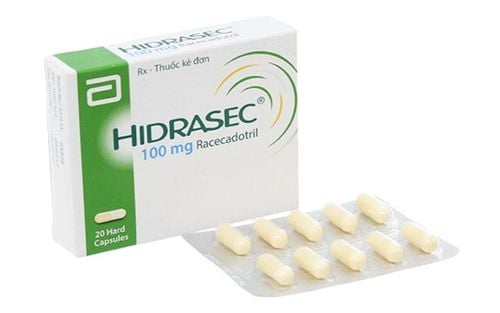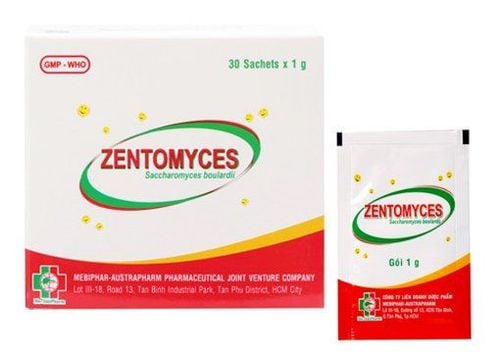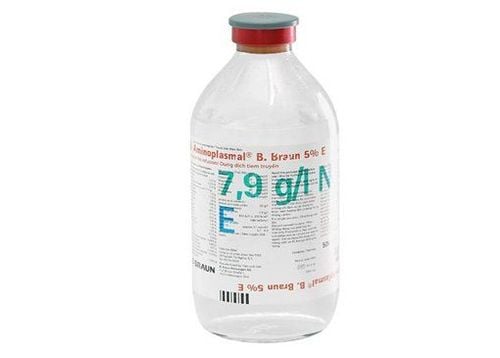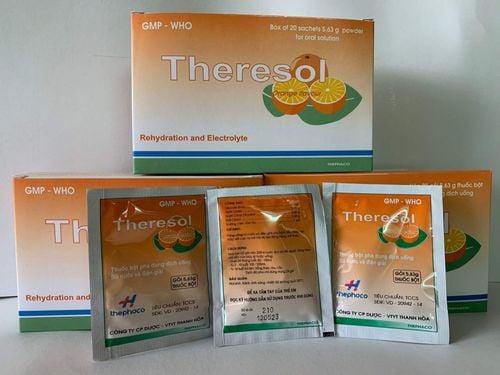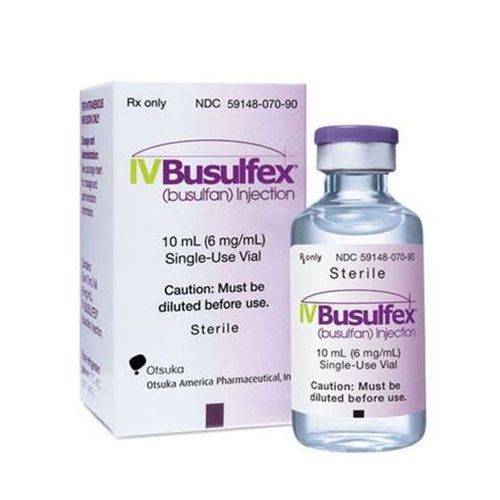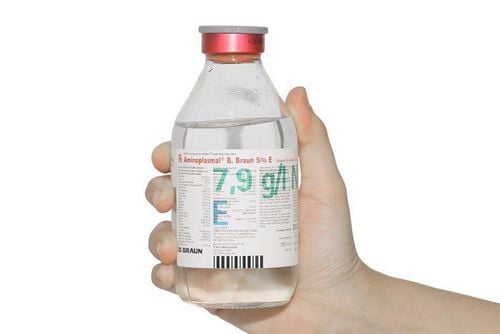This is an automatically translated article.
Glucose 5 is often used to provide water and supplement necessary energy sources for the body through intravenous infusion. The use of glucose 5 should be according to the specific dosage and instructions of a qualified physician. Therefore, patients should avoid arbitrarily infusion of glucose 5 without the approval of the doctor because this can potentially pose many health risks.
1. Infusion of glucose 5 for what?
Glucose 5 is intravenous fluid, used mainly to provide water as well as supplement energy for the body. In addition, glucose 5 also serves as a sterile solution for intravenous infusion, used to inject other drugs.
Glucose 5 is an over-the-counter drug, a product of Mekophar Pharmaceutical Joint Stock Company, which is prepared in the form of a solution with the packaging of 250 or 500ml bottles. Each glucose 5 bottle contains the following main ingredients:
Glucose monohydrate: Content of 12.5g (corresponding to 250ml bottle) or 25g (corresponding to 500ml bottle). Distilled water for injection just enough: 250ml (corresponding to 250ml bottles) or 500ml (corresponding to 500ml bottles).
2. What effect does Glucose 5 have?
2.1 In what cases is glucose infusion 5 indicated? Glucose 5 is often indicated for use in the following cases:
Provide water and an energy source needed by the patient's body. Helps detoxify people with acute/chronic infections, carbon dioxide/cyanide poisoning, sleeping pills, hepatitis, cirrhosis, shock or cardiovascular collapse. Used as a nutritional support for the body in patients with blood loss, dehydration due to persistent vomiting or diarrhea. Prophylaxis and treatment of ketosis in malnourished patients. Used as a carrier to infuse drugs into the patient's body before, during and after surgery. Used to lower blood glucose levels. 2.2 Mechanism of action of glucose 5 Glucose acts as a simple 6-carbon sugar, which can be used intravenously or orally to treat conditions in which the body is deficient in fluids and sugar. After entering the body, glucose is absorbed at a rapid rate in the intestine. Peak plasma glucose concentrations in individuals with hypoglycemia usually occur 40 minutes after administration. In addition, glucose is also converted into water and carbon dioxide, and released as an energy source for the body.
3. Dosage and usage of Glucose 5
3.1 Dosage for Adults Glucose 5 Dosage is usually determined based on individual patient needs. Before and during glucose infusion 5, it is necessary to closely monitor the patient's blood glucose index. Below is the recommended adult dose of glucose 5 for adults:
Take a maximum glucose 5 dose of 500-800mg/kg body weight within one hour. A 5% glucose solution (isotonic to blood) is used to compensate for dehydration, so it can be infused into a peripheral vein. When the concentration of glucose solution is > 5% (hypertonic with blood) can be used for energy supply and central venous infusion. For a hypoglycemic emergency, the physician may prescribe glucose 5 infusion into a peripheral vein at a slow rate equivalent to 3ml/min. For parenteral nutrition, the doctor will prescribe glucose 5 along with solutions containing fat or amino acid emulsions (either individually or using a 3-in-1 mixed infusion bottle). Use a 25-50% hypertonic glucose solution to help reduce cerebral-spinal pressure and improve cerebral edema caused by alcohol poisoning. In case of necessity, insulin can be used together, but it is necessary to closely monitor the patient's blood sugar to adjust the appropriate insulin dose. 3.2 Dosage of glucose 5 for children The dose of glucose 5 intravenous infusion for children will be determined based on the age and health of the child, specifically:
Usual dose for children with hypoglycemia: Before infusion IV need to dilute glucose solution 5, then peripheral intravenous infusion with a high concentration of 12.5 - 15%. Dose for children < 6 months: Intravenous glucose 5 from 0.25 - 0.5g/kg/dose, avoid using more than 25g/dose. Dose for neonates > 6 months and children: Intravenous glucose 5 from 0.5 to 1g/kg. The maximum infusion dose can be up to 25g/dose, however avoid exceeding. Dose for adolescents: Intravenous glucose infusion in 5 doses of 10-25g/kg. 3.3 How to use glucose 5 Patients should avoid self-infusion of glucose 5 at home without a doctor's prescription. Usually, glucose 5 will be given intravenously in a hospital or a qualified doctor's office. In addition, glucose 5 should not be administered intravenously at the same time as blood transfusion.
In the process of using glucose 5, the patient needs to adhere to the correct dosage as directed by the doctor. Rapid or prolonged infusion of large amounts of 5% glucose can lead to water intoxication or edema. At that time, the patient needs emergency care to treat overdose symptoms immediately to prevent life-threatening risks.
4. Contraindicated for infusion of glucose 5 for which case?
Intravenous glucose 5 is not generally recommended for the following situations:
People who are allergic or intolerant to glucose. People who are experiencing fluid retention or dehydration in the case of insufficient electrolyte replacement. Subject is in hyperosmolar coma, acidosis or hypokalemia. Patients with anuria, bleeding in the spinal cord or in the skull should avoid infusion of hypertonic glucose solutions. Patients with acute alcohol poisoning or alcohol delirium with dehydration. People who have just experienced a cerebrovascular accident - a time when high blood sugar in the ischemic area is converted into lactic acid, causing brain cells to die.
5. Some side effects when using glucose 5
Most drugs cause more or less different side effects. The extent of adverse drug reactions may or may not occur in each patient. Here are the symptoms that the patient may experience after intravenous glucose infusion 5:
There is a feeling of swelling, pain or redness at the injection site. Venous irritation or thrombophlebitis. Fluid and electrolyte disturbances, including hypophosphataemia, hypomagnesaemia, hypokalemia. Urinating a lot. When noticing the following signs in the body, the patient should immediately notify the doctor for immediate medical assistance, including:
Confusion, body weakness. Experience severe allergic reactions such as rash, hives, swelling of the mouth/lips/eyes/tongue, difficulty breathing or chest tightness. The patient has swelling of the hands/feet. Muscle twitching. The above list is not exhaustive of all side effects when desired when infusion of glucose 5. In some cases, patients may experience other side effects not mentioned above. In case of abnormal body signs, the patient should immediately report to the doctor for diagnosis and treatment.
6. Glucose 5 interacts with which drugs?
The use of glucose 5 at the same time with certain other drugs may lead to an interaction reaction. This alters the drug's ability to work, which increases the effects of side effects. According to experts, the use of glucose 5 with diabetes drugs can increase blood sugar levels, and reduce the effectiveness of diabetes drugs.
Ideally, the patient should tell the doctor a list of all the medications they are taking, including over-the-counter/prescription drugs, supplements, vitamins or supplements. Patients should avoid self-administering, changing their dose, or stopping glucose 5 without their doctor's approval.
In addition to diabetes medications, glucose 5 can also interact with certain foods, tobacco, or alcohol. In addition, some medical conditions can also affect the effectiveness of glucose 5, including:
Diabetic coma or liver complications. Confusion, memory problems, bleeding in the spine or in the head. Diabetes or high levels of galactose in the blood.
7. Some special notes when using Glucose 5
7.1 Intravenous Infusion of Glucose 5 Before using glucose 5, the patient should be careful of the following:
Tell your doctor / pharmacist if you are allergic to glucose or any herbs or other drugs. Tell your doctor if you are taking any medications, herbal supplements or dietary supplements. Tell your doctor if you plan to become pregnant, are pregnant or are breast-feeding. Regularly monitor blood glucose levels, electrolytes and water balance. If necessary, additional electrolytes may be required. Need to infuse glucose solution at the rate prescribed by the doctor, avoid infusion too quickly or for too long, leading to the risk of edema or water intoxication. 7.2 Storage conditions for glucose drugs 5 Glucose 5 intravenous solution should be stored at a temperature of ≤ 30oC and in a dry place, with a humidity of ≤ 70% and protected from direct light. In addition, the medicine should be kept in a dry place, out of reach of small children or easily accessible to pets.
Glucose 5 is often used to provide water and supplement necessary energy sources for the body through intravenous infusion. The use of glucose 5 should be according to the specific dosage and instructions of a qualified physician.
Follow Vinmec International General Hospital website to get more health, nutrition and beauty information to protect the health of yourself and your loved ones in your family.
Please dial HOTLINE for more information or register for an appointment HERE. Download MyVinmec app to make appointments faster and to manage your bookings easily.




